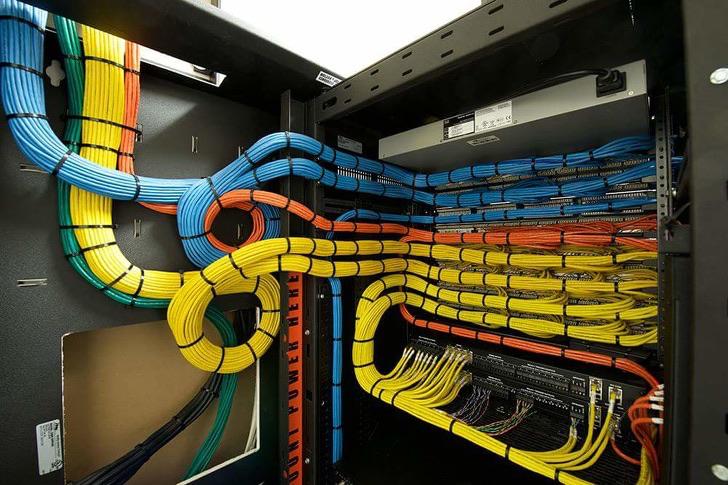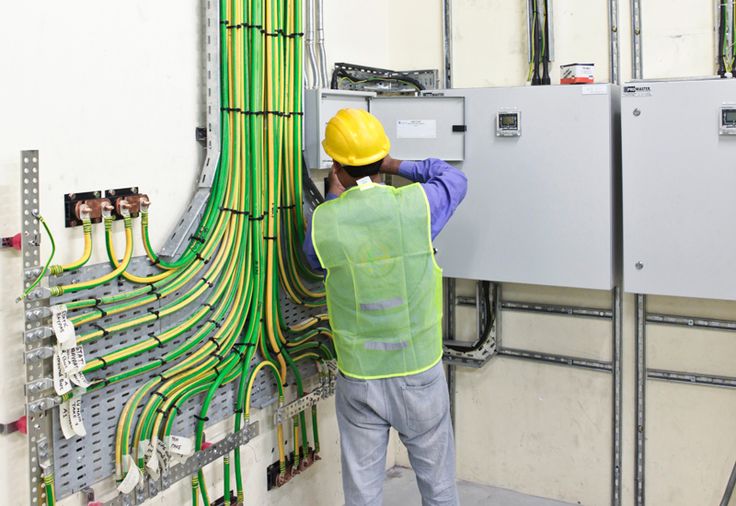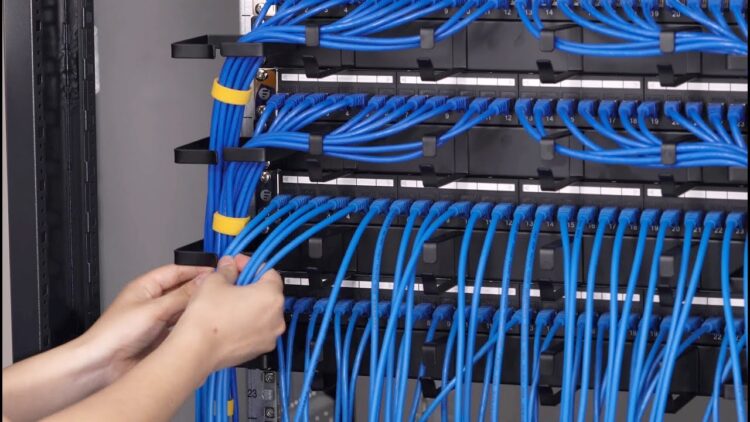No facility can operate without an IT system nowadays. It serves as the brain of any business since the unit is responsible for processing and computing tasks. The smoothness of operation directly depends on the correctly arranged system and its neat appearance.
No network system consisting of dozens of IT devices can work without wires and cables. Without cords, active hardware pieces stay dozens of separate components. Thus, wires perform an important function. Hundreds of cables are used to connect units and enable communication within the system.
Wire management is a set of measures taken to ensure the proper arranging of cords and prevent their tangling and rapture. Careful server rack cable management affects the smoothness of operation and the security of an entire system.
Benefits of Wise Cable Management

Source: reddit.com
If you still think that cable management is a waste of time, you have never been to data centers. Here’re the main advantages that wire arrangement brings:
- Improved system performance. When wires do not stretch as they are but are laid neatly in managers or tied with ties, there is a low risk of cable rapture and, as a consequence, system downtime.
- Enhanced accessibility. Hundreds or even thousands of wires run through server cabinets connecting different system units. If they are not organized, the staff faces difficulties with access to functional units and devices.
- Improved maintenance and serviceability. When it is necessary to replace some components (for instance, a server rack switch or server) or do maintenance, technicians do their duties quicker and more effectively when nothing hinders them.
- Increased cooling efficiency. When wires are laid in boxes and tied neatly, more space is left for air circulation. Thus, cooling is more effective and it is easier to create an optimal environment inside cabinets.
- Improved scalability. Arranged cords take less space and provide for better ergonomics. Tangling can lead to space-wasting, while stretch cords in ties or boxes occupy some inches.
Proper server cabinet cable management is the first step to the organization of a long-lasting and smoothly-functioning network system and keeping an entire data center in order.
Crucial Steps for Planning Cord Management

Source: pinterest.com
Now, let’s make a step-by-step guide on how to manage wires. Follow the next steps to cope with the task quickly and effectively and avoid mistakes.
- Plan appropriately. It is recommended to make a 3D layout to find the most effective routes to wire cords and visualize a future layout. This step helps eliminate multiple mistakes and save meters of cables.
- Measure the connection distance to know how many meters of cords you need. Apply this to both distance inside cabinets and an entire data center premise. If you need adjustable cords, calculate the needed length with excess.
- Choose suitable solutions for cable identification. Thus, you’ll quickly connect the system and clearly understand what cords are designed for what devices.
- Label both ends of the cables. Different colors, labels, or stickers are used to differentiate cables. This measure helps simplify maintenance when it is necessary to identify raptured or non-working wires.
- Route wires through cabinet or rack sides to ensure the best ergonomics inside furniture and prevent overheating due to heat exchange with operating devices. When it comes to routing cables through a room, lay them neatly alongside the ceiling or floor.
- Keep in mind future expansion. You’ll likely add new devices and servers in the future to make your system more powerful and enable the processing of larger amounts of data. So, leave enough space for adding more wires in the future.
- Avoid thermal issues by avoiding close contact with heated hardware with cords. Remember that functioning servers and active hardware emit much heat. Some cords can get spoiled under the influence of high temperatures.
- Document and maintain organization. Create maps of the wired cables obligatorily. Depicted routes will simplify and speed up maintenance. The staff will clearly track cords and identify the needed ones.
These tips will help develop the best cord layout and enjoy neatly arranged wires. Sticking to the guide, technicians will avoid multiple mistakes and ensure the best arrangement of cables.
Handy Accessories for Cord Management

Source: youtube.com
The next accessories are widely popular for network rack wire management. Most technicians prefer them when arranging cords:
- A horizontal cable manager is a long plastic or metal box that is installed along horizontal bars. Such managers allow for laying different types of wires and accommodate up to several dozen cords.
- A vertical cable manager is the same accessory as a previous one, but it is designed for vertical fastening. It is mounted to vertical posts and support cables that stretch from bottom to top, or in the opposite direction.
- A cable manager arm is an adjustable tool that is used for devices that frequently move and slide out. The accessory allows for winding up and unwinding cords. The arm construction can become longer when a device slides out and wind up a wire when the device is placed in its regular position.
- A patch panel is a special cross panel that provides a variety of connectors and contacts. The size of the patch panel depends on the number of ports. The accessory is suitable for fiber optic, RJ45, category 5, and other cords. The device units all cable connections together to connect them to another Ethernet network.
- Cable management trays are big spacious accessories that allow for storing extra cables on the bottom of cabinets or racks. They can hold dozens of wires.
- A sliding panel is used to accommodate devices and cords and simplify maintenance. In this case, the panel is equipped with a special mechanism that allows for stretching cords without raptures.
Cable tangling is a common problem in data centers since the number of cords within one system can reach several thousand. If the staff doesn’t take an effort to arrange them, it will inevitably lead to tangling and rapture in the future. The need to organize and manage cords is vital since the operation and smoothness of an entire IT infrastructure depend on it. Thus, system administrators should choose appropriate accessories that help hold and route wires.




